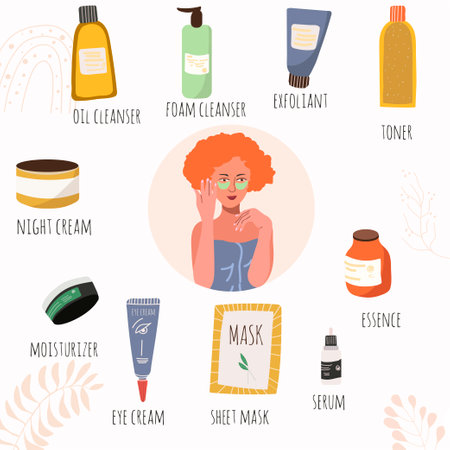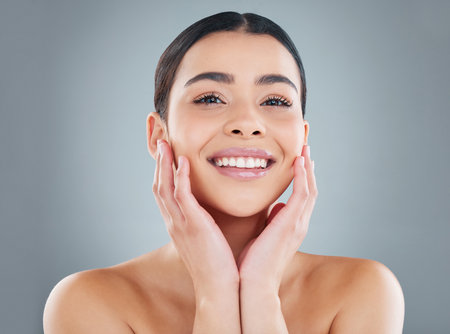Introduction to Hyperpigmentation
Hyperpigmentation is a common skin concern that affects people of all backgrounds, including those living in the UK. At its core, hyperpigmentation refers to areas of the skin becoming darker than the surrounding tissue due to an excess production of melanin, the pigment responsible for skin colour. While it might sound straightforward, there are several misconceptions about this condition. Many believe hyperpigmentation only affects those with certain skin tones or that it is merely a cosmetic issue, but in reality, it can impact anyone and sometimes signals underlying health concerns. In the British context, factors such as varying climate, limited sunlight exposure, and diverse ethnic backgrounds contribute to the unique ways hyperpigmentation presents itself across the population. Understanding what hyperpigmentation truly is helps empower individuals to seek accurate information and compassionate care tailored to their needs within the UK.
Common Causes of Hyperpigmentation in the UK
Understanding what triggers hyperpigmentation is essential for prevention and management, especially given the unique environmental and lifestyle factors present in the UK. While hyperpigmentation can affect anyone, knowing its common causes helps you make informed choices for your skin’s health and confidence.
Sun Exposure: The Underestimated Factor
Despite the UK’s reputation for cloudy skies and frequent rain, ultraviolet (UV) exposure remains a significant cause of hyperpigmentation. On overcast days, up to 80% of UV rays still penetrate clouds, contributing to cumulative skin damage and uneven pigmentation. Many Britons underestimate the need for daily sun protection, particularly during spring and summer months when UV intensity peaks.
Hormonal Changes: Life Stages and Skin Impact
Hormonal fluctuations are another key contributor. Conditions such as pregnancy (commonly causing melasma or “the mask of pregnancy”), use of oral contraceptives, and menopause can all trigger increased melanin production. These life stages are universal but are influenced by access to healthcare advice and cultural attitudes towards skincare—both highly relevant in the UK context.
Post-Inflammatory Responses
The UK’s diverse population means varying susceptibility to post-inflammatory hyperpigmentation (PIH), which occurs after skin injury or inflammation—such as acne, eczema, or psoriasis flare-ups. PIH is more prevalent among individuals with darker skin tones, who make up a growing segment of the British population.
The Role of UK Climate
The often damp and cool climate may seem protective, yet it can indirectly influence skin health. Cold winds and central heating systems tend to dry out the skin, weakening its barrier function and making it more prone to irritation or inflammation, both of which can lead to hyperpigmentation. Additionally, fluctuating weather patterns can result in inconsistent sun exposure, making it harder for residents to establish consistent sun protection routines.
Summary Table: Key Causes of Hyperpigmentation in the UK
| Cause | Description | UK-Specific Influence |
|---|---|---|
| Sun Exposure | UV rays stimulate excess melanin production | Cloudy weather leads to underestimation of risk; variable sunlight complicates protection habits |
| Hormonal Changes | Pregnancy, contraception, menopause disrupt hormone levels | Cultural openness about women’s health supports awareness; NHS guidance available |
| Post-Inflammatory Response | Skin trauma from acne, eczema or injuries leads to dark spots | Diverse skin types require tailored advice; increased prevalence among ethnic minorities |
| Climate Effects | Dryness and irritation from cold weather and indoor heating weaken skin barrier | Frequent use of central heating; inconsistent sun exposure through seasons |
By recognising these common causes within the context of British life and climate, you are empowered to take proactive steps—be it adopting year-round SPF use or addressing hormonal changes with professional guidance—to nurture your skin’s natural radiance.

3. At-Risk Groups and Skin Types
When considering hyperpigmentation in the UK, it’s important to recognise that not everyone faces the same level of risk. Our nation’s rich tapestry of ethnic backgrounds means skin types and susceptibilities vary widely. Individuals with darker skin tones—such as those from African, South Asian, or Caribbean backgrounds—are naturally more prone to certain types of hyperpigmentation, like post-inflammatory hyperpigmentation (PIH) and melasma. This is due to higher levels of melanin production, which can react strongly to inflammation, sun exposure, or hormonal changes.
Age also plays a significant role. As we get older, our skin becomes more susceptible to sun damage accumulated over the years, often resulting in age spots or ‘liver spots’ that are common on the face and hands. People over 40 are particularly likely to notice these changes, especially if they have spent a lot of time outdoors without adequate sun protection.
Lifestyle factors mustn’t be overlooked. Those who enjoy outdoor activities—be it gardening in their allotment, rambling across the countryside, or spending weekends at the seaside—face increased UV exposure, which is a major trigger for hyperpigmentation even on cloudy British days. Smokers and individuals who use certain medications may also see an elevated risk due to their impact on skin health and sensitivity.
Genetics play their part as well; if your family members are prone to pigmentation issues, you may inherit this tendency. Hormonal fluctuations—common during pregnancy or when using contraceptives—can also lead to conditions like melasma, especially among women in their childbearing years.
Understanding your own risk factors is empowering. Whether your heritage gives you richer skin tones, your lifestyle includes lots of time outdoors, or you’ve noticed changes with age, being aware helps you take proactive steps towards prevention and care tailored for life in the UK.
4. Environmental and Lifestyle Risk Factors
When considering hyperpigmentation in the UK, it is vital to recognise how everyday environmental and lifestyle factors can influence your skin’s health. From bustling city commutes to weekend countryside escapes, each aspect of daily British life presents unique risks that may contribute to the development of dark spots or uneven skin tone.
A Look at Daily Life in the UK
Whether you are navigating the London Underground during rush hour or enjoying a brisk walk along Brighton Pier, exposure to pollution and fluctuating weather conditions is inevitable. Urban areas across the UK, especially large cities like Manchester, Birmingham, and London, are subject to higher levels of air pollution. Fine particulate matter (PM2.5), nitrogen dioxide, and other pollutants can stress the skin barrier, making it more susceptible to hyperpigmentation triggered by inflammation.
Commuting and Outdoor Activities
| Activity | Potential Risk | Practical Tips |
|---|---|---|
| Daily Commuting | Increased exposure to vehicle emissions and UV rays through windows | Apply broad-spectrum SPF daily—even on cloudy days; consider antioxidant serums |
| Outdoor Sports & Recreation | Prolonged sun exposure, especially during festivals or sporting events | Wear hats, sunglasses, and reapply sunscreen regularly; seek shade when possible |
Pollution’s Impact on Skin
The UK’s changing climate—with frequent rain followed by bursts of sunlight—can also catch many off guard. UV rays penetrate even on overcast days, so consistent sun protection is essential regardless of the season. Moreover, pollution particles can cling to the skin after a day out in town, triggering oxidative stress that may accelerate pigmentation issues.
Skincare Routines and Product Choices
Your approach to skincare plays a crucial role in prevention. Many Britons opt for minimal routines due to busy schedules, but this can sometimes lead to insufficient cleansing and protection. Selecting products with antioxidants (like vitamin C), gentle exfoliants (such as lactic acid), and non-comedogenic moisturisers is key. Importantly, always check for “broad-spectrum” SPF on sunscreens—a must-have in any UK skincare arsenal.
Summary Table: Skincare Habits That Matter
| Habit | Why It Matters |
|---|---|
| Cleansing after exposure | Removes pollutants that contribute to pigmentation |
| Daily SPF use | Protects against both UVA/UVB rays year-round |
| Antioxidant serum application | Neutralises free radicals from pollution and sunlight |
By being mindful of these environmental and lifestyle risk factors specific to life in the UK, you’re taking an empowering step towards healthier skin. Remember: small changes in your daily routine can have a significant impact over time.
5. Effective Prevention Strategies for the UK
Sun Safety: A Must, Even on Cloudy Days
While the British weather is famously unpredictable and often overcast, UV rays are still present and can contribute to hyperpigmentation. Make it a daily habit to use a broad-spectrum sunscreen with at least SPF 30, applying it generously on exposed skin—even when it’s grey outside. Don’t forget areas like your ears, neck, and hands. Protective clothing, hats, and sunglasses offer additional defence, especially during outdoor activities or seaside holidays.
Skincare Habits Suited for British Lifestyles
The UK’s climate can be damp and chilly, which may lead to dry or sensitive skin—a factor that can exacerbate pigmentation issues. Opt for gentle cleansers and moisturisers tailored to your skin type. Incorporate antioxidants such as vitamin C serums into your routine to help combat environmental stressors. Avoid harsh scrubs or aggressive treatments that could irritate the skin and trigger further discolouration.
Consider Your Commute and Daily Routine
Whether you’re cycling through city streets or walking to the tube, pollution and wind exposure can impact your skin’s health. Cleanse your face thoroughly in the evening to remove pollutants, and apply barrier creams as needed to protect against harsh weather. Keep an umbrella handy—not just for rain but as an extra shield from unexpected sunbursts.
When to Seek Professional Help
If you notice persistent or worsening pigmentation despite careful prevention, don’t hesitate to consult a GP or dermatologist. The NHS offers referrals for concerning skin changes, while private clinics across the UK provide advanced treatments like chemical peels or laser therapy tailored to various types of hyperpigmentation. Early intervention ensures the most effective results and peace of mind.
Your Confidence, Your Wellbeing
Remember, looking after your skin is not just about appearance—it’s about nurturing your confidence and overall wellbeing. By adopting these practical strategies suited to the British climate and lifestyle, you empower yourself to prevent hyperpigmentation while embracing healthy habits every day.
6. Addressing Myths and Promoting Positive Skin Health
When it comes to hyperpigmentation, misconceptions can often lead to unnecessary worry or ineffective skincare routines. Let’s gently clarify some of the most common myths in the UK and foster a positive, informed approach to skin health.
Myth 1: Only People with Darker Skin Tones Experience Hyperpigmentation
This is simply not true. While certain types of hyperpigmentation may be more noticeable on deeper skin tones, people of all backgrounds in the UK can experience changes in pigmentation due to sun exposure, hormonal fluctuations, or inflammation.
Gentle Guidance:
If you notice any changes in your skin tone—regardless of your complexion—it’s always wise to consult a skincare professional who understands your unique needs and can offer tailored advice.
Myth 2: Hyperpigmentation Can Be “Scrubbed” Away
Over-exfoliating or using harsh products may actually worsen pigmentation issues by irritating the skin. Gentle care is key for everyone living in the British climate, where environmental factors like wind and cold can make skin more sensitive.
Gentle Guidance:
Choose mild cleansers and protect your skin barrier. Consistency with proven ingredients—such as vitamin C or niacinamide—can make a real difference over time, without causing harm.
Myth 3: Sun Exposure Helps Fade Dark Marks
Some believe that spending time in the sun will even out their skin tone. In reality, unprotected sun exposure tends to darken existing pigmentation and increase future risk, especially given the unpredictability of British weather patterns.
Gentle Guidance:
No matter how cloudy it looks outside, daily use of broad-spectrum SPF is crucial. This simple habit helps prevent further pigmentation and supports long-term skin health.
Promoting Confidence and Positive Self-Image
Your skin tells your unique story—and it deserves kindness and understanding. Instead of chasing perfection or comparing yourself to unrealistic standards, focus on nurturing your skin’s natural beauty. Healthy, confident skin starts with self-acceptance and gentle, well-informed care. Remember: you are more than your complexion, and every step towards looking after yourself is worth celebrating.
7. Finding Support and Resources in the UK
Dealing with hyperpigmentation can sometimes feel isolating, but you are certainly not alone. The UK offers a wealth of reliable resources and supportive communities to help you navigate your journey towards healthier skin. Seeking credible advice is an empowering first step, and knowing where to find trustworthy information makes all the difference.
Credible Advice from Trusted Sources
If you suspect you have hyperpigmentation or would like tailored guidance, it’s wise to consult reputable organisations such as the NHS and British Association of Dermatologists (BAD). Their websites provide up-to-date, evidence-based information on skin health, common causes of pigmentation changes, and effective prevention strategies suited to the UK environment. You can also access NHS 111 online for non-urgent medical advice or speak to your GP for personalised recommendations.
Support Groups and Community Networks
Connecting with others who share similar experiences can be both comforting and enlightening. There are several UK-based forums and support groups dedicated to skin health, including those hosted by Skin Support (a British Skin Foundation initiative) and Changing Faces, a charity supporting people with visible differences. These platforms offer a safe space to exchange stories, coping tips, and emotional encouragement. Many local community centres also organise skin health workshops or peer support meetings—don’t hesitate to ask your GP about what’s available in your area.
Finding a Trusted Dermatologist Near You
The right specialist can make all the difference when managing hyperpigmentation. In the UK, you can ask your GP for a referral to an NHS dermatologist if your condition requires professional attention. For private consultations, use the British Association of Dermatologists’ ‘Find a Dermatologist’ tool or check with the General Medical Council’s online register to ensure you choose a qualified expert. Many clinics now offer virtual appointments, making it easier than ever to access professional care regardless of where you live.
Your Journey Towards Healthier Skin Starts Here
Remember, reaching out for help is a sign of strength—not weakness. By tapping into these trusted UK resources, you’re taking proactive steps towards understanding and managing hyperpigmentation with confidence. Stay gentle with yourself; progress takes time, but support is always within reach.


